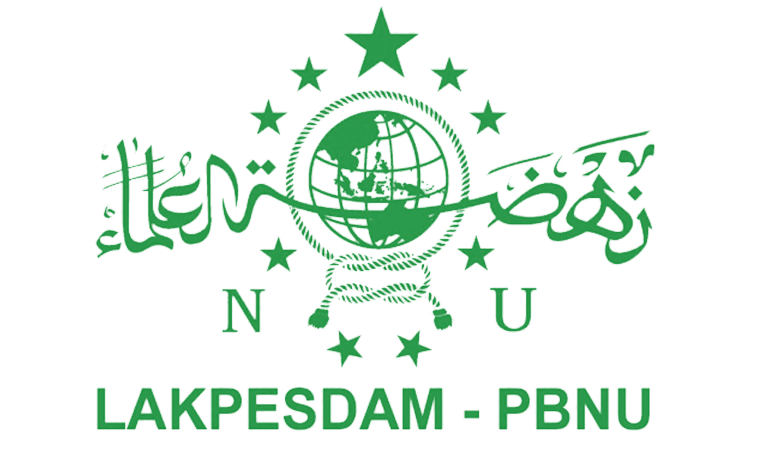CHRISTIANS’ TOLERANCE OF MUSLIMS’ RELIGIOUS SOUNDS IN TANA TORAJA
DOI:
https://doi.org/10.31969/alq.v29i1.1174Keywords:
Muslim-Christian, noise, religious voice, tana toraja, toleranceAbstract
Despite extensive research on religious tolerance, there is little empirical research on the sensitive issue of sacred sound, particularly in minority Muslim areas. This issue emerged in Indonesia following the Minister of Religious Affairs' policy to regulate loudspeakers from mosques, which were seen as potentially causing intolerance. Religious tolerance remains well established in Muslim-minority areas such as Tana Toraja, even though mosques are allowed to sound freely. The present research explores the traces of Christian tolerance to the sound of mosques heard by minority Muslims. This qualitative study applied an interpretive phenomenological research design with religious leaders, academics, students, and Christian community members as data sources. Garret Keizer's noise theory and Robert Hayden's concept of tolerance categorisation were used to analyse the data. The research results indicated tolerance between religious communities as the mosque sound was accepted as a natural-cultural sound rather than a theological sound. Therefore, intolerance potential arises from the sociological rather than theological dimension. This study suggests that religious tolerance should be shaped by a professional understanding of one's faith and an appropriate response to the religious practices of others. External factors such as social, economic, and political issues, often framed as religious issues, are at the root of religious intolerance. In order to counter the risk of intolerance, a systematic and continuous socialisation of a moderate understanding of all elements of the religious communities is required.
References
Abbink, G. J. (2018). The religious soundscape of Ethiopia: “noise†production between sacred and secular spaces. In F. Girke, S. Thubauville, & W. Smidt (Eds.), Anthropology as Homage. Festschrift for Ivo Strecker (pp. 251–269). R. Koeppe Verlag.
Aili, L., Fucheng, L., Zhiyong, D., Mi, L., & Changhong, Y. (2014). 文化地ç†å¦è§†è§’ä¸‹çš„å£°æ™¯ç ”ç©¶åŠç›¸å…³è¿›å±• (Progress in soundscape studies from the perspective of cultural geography). Progress in Geography, 33(11), 1452–1461. https://doi.org/10.11820/dlkxjz.2014.09.003
Bretherton, L. (2004). Tolerance, Education and Hospitality: A Theological Proposal. Studies in Christian Ethics, 17(1), 80–103. https://doi.org/10.1177/095394680401700106
Calleri, C., Astolfi, A., Pellegrino, A., Aletta, F., Shtrepi, L., Bo, E., Di Stefano, M., & Orecchia, P. (2019). The effect of soundscapes and lightscapes on the perception of safety and social presence analyzed in a laboratory experiment. Sustainability (Switzerland), 11(11), 1–19. https://doi.org/10.3390/su11113000
De Witte, M. (2008). Accra’s Sounds and Sacred Spaces. International Journal of Urban and Regional Research, 32(3), 690–709. https://doi.org/10.1111/j.1468-2427.2008.00805.x
Fink, D. (2019a). Ambient noise is “the new secondhand smoke.†The Journal of the Acoustical Society of America, 146(4), 2835–2835. https://doi.org/10.1121/1.5136828
Fink, D. (2019b). A new definition of noise: noise is unwanted and/or harmful sound. Noise is the new ‘secondhand smoke’. Proceedings of Meetings on Acoustics, 050002. https://doi.org/10.1121/2.0001186
Forst, R. (2012). Tolerance in Conflict. Cambridge University Press. https://doi.org/10.1017/CBO9781139051200
Foundation, W. (2020). Kemajuan Tanpa Penyelesaian Akar Masalah.
González, A. E. (2014). What Does “Noise Pollution†Mean? Journal of Environmental Protection, 05(04), 340–350. https://doi.org/10.4236/jep.2014.54037
Grant, A. M. (2018). Noise and Silence in Rwanda’s Postgenocide Religious Soundscape. Journal of Religion in Africa, 48(1–2), 35–64. https://doi.org/10.1163/15700666-12340125
Hayden, R. M. (2002). Antagonistic Tolerance: Competitive Sharing of Religious Sites in South Asia and the Balkans. Current Anthropology, 43(2), 205–231. https://doi.org/10.1086/338303
Henry, J. A., Theodoroff, S. M., Edmonds, C., Martinez, I., Myers, P. J., Zaugg, T. L., & Goodworth, M.-C. (2022). Sound Tolerance Conditions (Hyperacusis, Misophonia, Noise Sensitivity, and Phonophobia): Definitions and Clinical Management. American Journal of Audiology, 1–15. https://doi.org/10.1044/2022_AJA-22-00035
Hsieh, H. C. L., & Hwang, C. Y. (2015). Applying Soundscape to Creating an Interactive and Cultural Centered Experience. Cross-Cultural Design Applications in Mobile Interaction, Education, Health, Transport and Cultural Heritage, 113–120. https://doi.org/10.1007/978-3-319-20934-0_11
Huda, N. (2021). Muslims must give up azaan by loudspeakers. Even Prophet would have rejected it. The Print. https://theprint.in/opinion/muslims-must-give-up-azaan-loudspeakers-even-prophet-rejected-it/626407/
Jafari, M. J., Khosrowabadi, R., Khodakarim, S., & Mohammadian, F. (2019). The Effect of Noise Exposure on Cognitive Performance and Brain Activity Patterns. Open Access Macedonian Journal of Medical Sciences, 7(17), 2924–2931. https://doi.org/10.3889/oamjms.2019.742
Johansen, P. H. (2020). Listening to Silence: Bringing Forward the Background Noise of Being. Theory, Culture & Society, 37(7–8), 279–293. https://doi.org/10.1177/0263276419871654
Keizer, G. (2010). The Unwanted Sound of Everything We Want; A Book About Noise. PublicAffairs.
Kovacic, M. (2017). Official regulations and perceptual aspects of bell ringing. Muzikologija, 22, 59–73. https://doi.org/10.2298/MUZ1722059K
KovaÄiÄ, M. (2016a). Conflicting religious sounds in an urban space: The case of Ljubljana religious soundscape. 122–131.
KovaÄiÄ, M. (2016b). “Sacred Noiseâ€: The Case of the Ezan in Ljubljana. Musicological Annual, 52(2), 25–38. https://doi.org/10.4312/mz.52.2.25-38
Marpuah, M. (2019). Toleransi dan Interaksi Sosial antar Pemeluk Agama di Cigugur, Kuningan. Harmoni, 18(2), 51–72. https://doi.org/10.32488/harmoni.v18i2.309
Mehta, R., Zhu, R. (Juliet), & Cheema, A. (2012). Is Noise Always Bad? Exploring the Effects of Ambient Noise on Creative Cognition. Journal of Consumer Research, 39(4), 784–799. https://doi.org/10.1086/665048
Moosa, N. (2021). How Loud Is Too Loud? Competing Rights to Religious Freedom and Property and the Muslim Call to Prayer (Adhan or Azan) in South Africa. Religions, 12(5), 349. https://doi.org/10.3390/rel12050349
Network, L. N. (2022). Is Azaan A Hate Speech ? Law Street Journal. https://lawstreet.co/know-the-law/azaan-hatespeech-secular-democratic-loudspeakers-republic-azan
Pamungkas, C. (2014). Toleransi Beragama dalam Praktik Sosial: Studi Kasus Hubungan Mayoritas dan Minoritas Agama di Kabupaten Buleleng. Epistemé: Jurnal Pengembangan Ilmu Keislaman, 9(2), 285–316. https://doi.org/10.21274/epis.2014.9.2.285-316
Pietkiewicz, I., & Smith, J. A. (2014). A practical guide to using interpretative phenomenological analysis in qualitative research psychology. Psychological Journal, 20(1), 7–14.
Pijper, G. F. (1977). Studien over de gesciedenis van de Islam in Indonesia :1900-1950. E.J.Brill.
Setyabudi, M. N. P. (2020). Penguatan Toleransi Bagi Pemanjuan Budaya Keagamaan: Studi atas Praktik Toleransi Agama di Puja Mandala Bali. Harmoni, 19(2), 274–296. https://doi.org/10.32488/harmoni.v19i2.432
Shaw, D. (2021). Noisy Autonomy: The Ethics of Audible and Silent Noise. Public Health Ethics, 14(3), 288–297. https://doi.org/10.1093/phe/phab026
Shepherd, D., Heinonen-Guzejev, M., Heikkilä, K., Welch, D., Dirks, K. N., & McBride, D. (2020). The Epidemiology of Noise Sensitivity in New Zealand. Neuroepidemiology, 54(6), 482–489. https://doi.org/10.1159/000511353
Staff, O. (2022). Karnataka: High Court dismisses PIL saying that words of Azan like ‘Allah-hu-Akbar’ violate fundamental rights of other religions. OpIndia. https://www.opindia.com/2022/08/karnataka-high-court-pil-azan-violate-fundamental-rights-other-religions/
Statistik, B. P. (2021). Penduduk Menurut Wilayah dan Agama yang Dianut: Kabupaten Tana Toraja. https://sp2010.bps.go.id/index.php/site/tabel?search-tabel=Penduduk+Menurut+Wilayah+dan+Agama+yang+Dianut&tid=321&search-wilayah=Kabupaten+Tana+Toraja&wid=7318000000&lang=id
Tamimi Arab, P. (2015). “a minaret of lightâ€: transducing the islamic call to prayer? Material Religion, 11(2), 136–163. https://doi.org/10.1080/17432200.2015.1059126
Taylor, J. G. (2014). Edwin de Jong. Making a Living between Crises and Ceremonies in Tana Toraja: The Practice of Everyday Life of a South Sulawesi Highland Community in Indonesia. Asian Affairs, 45(2), 367–369. https://doi.org/10.1080/03068374.2014.911523
Thompson, M. S. (2014). Beyond Unwanted Sound Noise, Affect and Aesthetic Moralism. Dissertation, Newcastle University.
Unesco. (1994). Tolerance: the threshold of peace A teaching / learning guide for education for peace, human rights and democracy.
Yelmi, P. (2016). Protecting contemporary cultural soundscapes as intangible cultural heritage: Sounds of Istanbul. International Journal of Heritage Studies, 22(4), 302–311. https://doi.org/10.1080/13527258.2016.
Additional Files
Published
Issue
Section
License
Authors who publish with this journal agree to the following terms:
- Authors retain copyright and grant the journal right of first publication with the work simultaneously licensed under Creative Commons Attribution-NonCommercial-ShareAlike 4.0 International License that allows others to share the work with an acknowledgement of the work's authorship and initial publication in this journal.
- Authors are able to enter into separate, additional contractual arrangements for the non-exclusive distribution of the journal's published version of the work (e.g., post it to an institutional repository or publish it in a book), with an acknowledgment of its initial publication in this journal.
- Authors are permitted and encouraged to post their work online (e.g., in institutional repositories or on their website) prior to and during the submission process, as it can lead to productive exchanges, as well as earlier and greater citation of published work (See The Effect of Open Access).















